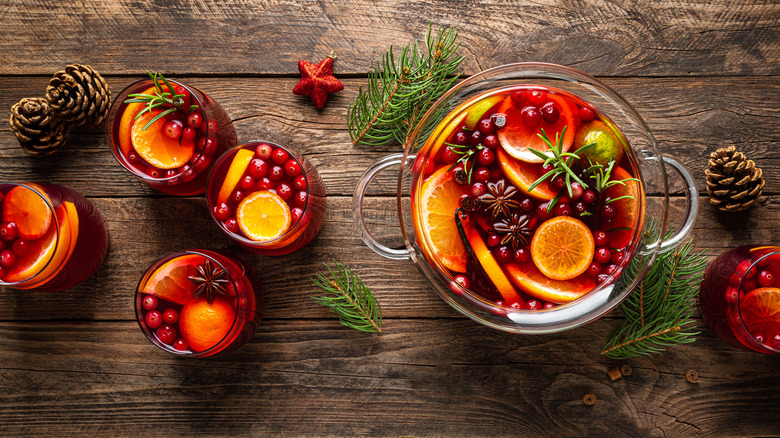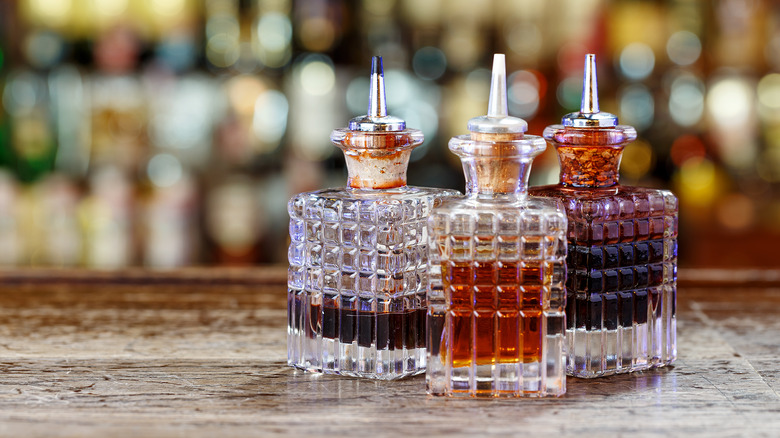Why You Should Carefully Consider Bitters When Batching Cocktails
One of the reasons it's so much fun to go out for a cocktail is to have each drink crafted specifically for you, to cater to your unique taste. When you're home entertaining guests, however, unless you happen to have a barback and a dishwasher that turns your glasses around in minutes, playing bartender for a crowd is best left to the professionals. That doesn't mean you can't serve serious craft cocktails to your guests, though. The solution is batching your cocktails – scaling them up, making them in group-sized portions, so they're ready to go when guests arrive.
Making cocktails ahead lets you actually enjoy your guests, rather than slinging drinks all night long, though there are some guidelines to keep in mind. Cocktail Contessa, for example, points out that the best candidates for batched cocktails are spirit-forward ones, meaning most of the ingredients are shelf-stable and aren't likely to degrade in flavor or consistency over time. Cocktails that require fresh ingredients like citrus juice can be made in batches, but they'll show best if you add the perishable ingredients shortly before serving.
This is the same for batched cocktails that contain fizzy ingredients like tonic water, club soda, or sparkling wine. Chilling sparkling ingredients and adding as you serve each cocktail means each guest's drink will show perfectly, with all those delightful bubbles intact. There's one more factor to consider when you're batching cocktails, besides perishable ingredients and bubbles, and that's how your cocktail bitters will perform over time.
How should bitters be handled in batched cocktails?
You might think bitters, which are basically extracts of botanicals, are just as stable as your other ingredients that are alcohol-based, and they are. But bitters don't exactly behave like bourbon or vodka in larger quantities, which means they require special handling in batched cocktails. Bitters & Bottles explains, "Highly aromatic compounds are very potent, and don't scale the same as your spirit or vermouth." Typically, the flavors of bitters tend to ramp up over time, meaning your batched cocktail might become unpleasantly bitter.
The solution, thankfully, is simple. Cocktail Contessa recommends adding just half the amount of bitters or bitter liqueurs like amaro that your batched recipe calls for. Bitters & Bottles agrees with this advice, suggesting making the batch of cocktails with half the bitters called for and then tasting it, keeping in mind that the flavors of your bitters are likely to become more forward over time.
Of course, most recipes that call for bitters use dashes as a measurement, which could perplex home mixologists, so Cocktails Distilled helpfully points out that a dash contains about 1/32 ounces. That means if a single cocktail calls for two dashes of bitters, making a batch for ten servings would call for 20 dashes, or roughly 2/3 of an ounce, but since you want to cut your bitters quantity in half, use ten dashes, or about 0.3 ounces.

